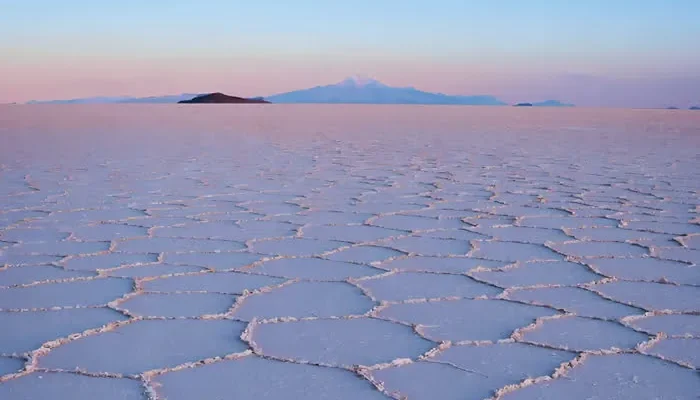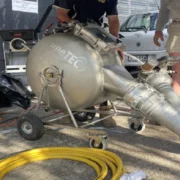Introduction to Salt Flats
Salt flats, which are also called playas or salt pans in some areas, are one of the most amazing natural sights on Earth. These large, flat surfaces are covered with thick layers of salt crystals, making a surface that reflects light and looks like it goes on forever. Imagine that you are on a huge, white plain with a cerulean dome of the sky above you.
The distance is fuzzy, and it feels like you are in a dream. The Bonneville Salt Flats in Utah, accessible through the Bonneville Salt Flats Adventure Tour, are a particularly famous example. This place is fun for both speed fans and nature lovers because it has both historical and natural beauty.
These views are more than just beautiful to look at. They are very important to the cultural and ecological histories of their areas because they support unique ecosystems and give different kinds of life supplies and shelter. Exploring salt flats is a treat for the senses and a great way to learn about how natural landscapes are kept in good shape.
How Salt Flats Form
The process of salt flats forming is very interesting and depends on certain geological and weather factors. When pools of water, usually salty lakes, evaporate in dry conditions, these things happen. The mineral-rich water leaves behind huge salt layers, mostly sodium chloride, that harden into the flat, wide landscapes we see today. The salt layers are very deep and wide because they have been flooded and evaporated over and over again for thousands of years.
These natural wonders have long and interesting histories. For example, the famous salt flats of today were made by big changes in the climate that turned ancient lakes into salt flats. For example, the Bonneville Salt Flats were once part of a huge lake that existed a long time ago. Scientists and tourists can learn about past climates and changes in the environment by seeing them now.
Ecological Importance of Salt Flats
In addition to being incredibly beautiful, salt flats are very important for the environment. In these places, you can find rare plants and animals that have evolved to do well in harsh circumstances. Animals depend on these areas for food and places to nest. The plants that grow there often can handle salt and help keep the soil stable.
The choreography of life around salt flats is intricate. Every organism, from the smallest bacterium to migratory birds, plays its ecological role. These salty places also help keep the temperature stable and replenish groundwater, which protects the health of ecosystems nearby.
Salt Flats as Tourist Destinations
Visiting a salt flat is not just about seeing it; it’s about experiencing its unique ambiance. Tourists are drawn by the promise of a landscape that blurs the line between the earth and the sky, offering a backdrop for moments of reflection and awe. Whether you’re traversing Bolivia’s Salar de Uyuni on a 4×4 tour or attending an event at the Bonneville Salt Flats, these environments offer similar experiences.
Tips for Visiting
Follow these tips to make sure your visit is safe and fun:
- Check the area’s weather, as it can have a big impact on safety and accessibility.
- Plan your trip for different times of the year to see different parts, from dry, salty stretches to water-filled, deathly mirrors.
What to Pack
Being ready is important. Don’t forget to bring:
- Good sun protection: Hats, sunglasses, and high-SPF sunscreen are must-haves because salt can make UV rays stronger because it reflects and glares so brightly.
- Water and snacks: In these dry places, it’s important to stay refreshed.
- Durable, comfy shoes: If you’re going to be walking on salt, you need the right shoes to protect your feet.
Challenges Faced by Salt Flats
Even though they are strong, salt flats face dangers that could threaten their long-term survival. As cities grow, they take over these areas, lowering their natural size and affecting the wildlife that lives there. Changes in the delicate balance of evaporation and moisture that keeps them alive are also caused by climate change.
Tourism that is good for the environment and attempts to protect it must work together. To make sure these natural wonders last, sustainable practices must be accepted and enforced, and both tourists and locals must be involved. Organizations need to spread the word about how important salt flats are and how to protect them around the world.
Salt Flats in Popular Culture
People have always thought of salt flats as stark and beautiful, and this idea has stuck with them. They look great as a movie background because they add an exotic, magical touch. A lot of photographers have been inspired by these places to catch their simple beauty, making pictures that are both simple and grand.
These landscapes have an impact on more than just art and media; they have become symbols of freedom, endurance, and adventure. Their alluring presence continues to spark creative stories and make people appreciate the raw power of nature. Find out what they mean to different cultures through sources.
Conclusion
Salt flats are beautiful natural areas and important ecological gems. They show how healthy the environment is and can also inspire and thrill you. To protect them, we need to know what part they play in the environment, be aware of the dangers they face, and encourage environmentally friendly ways to travel.
We need to protect these amazing places so that future generations can enjoy their breathtaking beauty as good stewards of the earth. As tourists and lovers of these one-of-a-kind settings, what we do and how we feel can help protect salt flats as a pure example of nature’s lasting beauty.
FintechZoom Apple Stock: Analysis Trends and Market Predictions for 2024









Comments